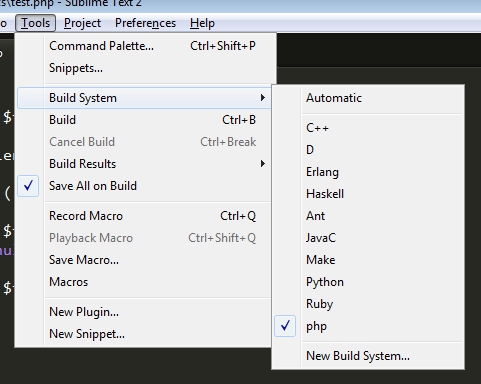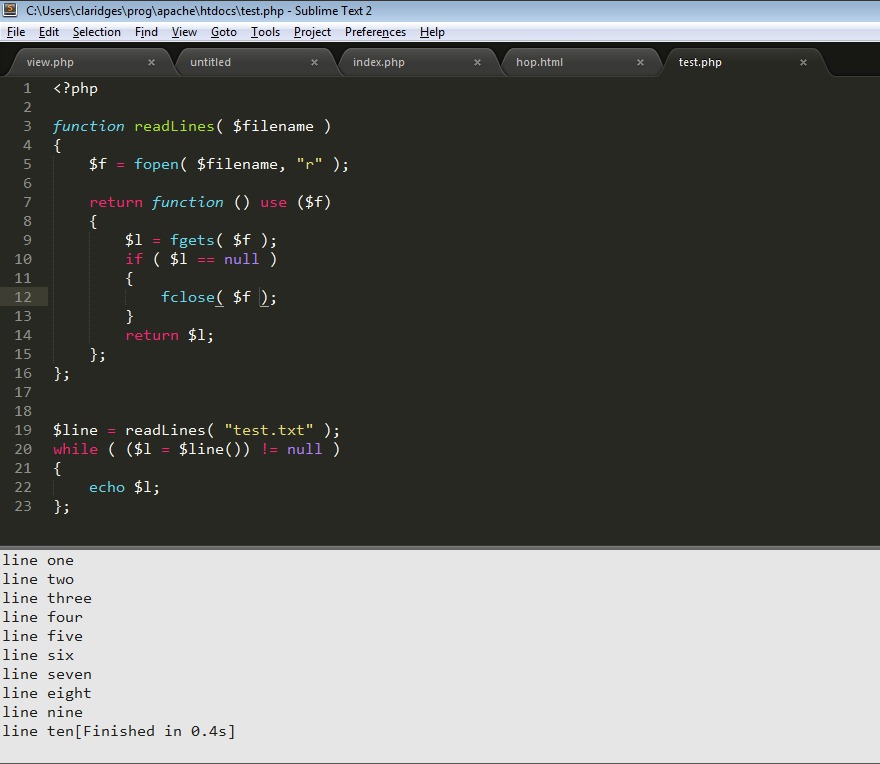Sublime Text 2 has the concept of build systems. This basically means that if you are editing a Python file then you can run the Python interpreter on the source file your are editing and see the output in a console window, all without having to leave the Sublime editor. It’s surprising how much quicker and easier this is compared to having to leave Sublime to swap to a?separate?console window. This is Sublime’s Tools->Build System menu Surprisingly, there is no supplied build system for PHP, to add one go to “New Build System”. A new tab opens for file?untitled.sublime-build?with the following in it:
Surprisingly, there is no supplied build system for PHP, to add one go to “New Build System”. A new tab opens for file?untitled.sublime-build?with the following in it:
{ “cmd”: [“make”] }
Delete that and replace it with this:
{ “cmd”: [“php”, “$file”], “file_regex”: “php$”, “selector”: “source.php” }
And save the file. Sublime will pop up the file save dialog, which defaults to the directory that Sublime uses for its user-generated config files, so don’t change the directory, just save this file as?php.sublime-build. Now, when you edit a file whose name ends with?php?(as specified by the “php$” regex in the config file) you will have a build system available. You can now hit CTRL+B and the PHP?interpreter?will run against your source file and the output appears in a Sublime Text window. The grey window shows the output of the PHP interpreter and the time it took to run.
The grey window shows the output of the PHP interpreter and the time it took to run.


















![[웹 프런트엔드] Node.js 빠른 시작](https://img.php.cn/upload/course/000/000/067/662b5d34ba7c0227.png)



